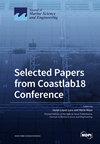The Impact of Container Ship Trim on Fuel Consumption and Navigation Safety
IF 2.8
3区 地球科学
Q1 ENGINEERING, MARINE
引用次数: 0
Abstract
Fuel consumption, fuel cost savings, environmental pollution, and navigation safety are significant factors for shipping companies. Maritime transport represents 3% of total greenhouse gas emissions globally. Trim optimization is one of the ways to save energy and reduce ship emissions. Thus, this study aimed to evaluate how the optimization of the trim of container ships at different speeds can decrease exhaust gas emissions and fuel consumption while considering the safety of navigation. This research was conducted by calculating the fuel consumption in real conditions and calculating the optimal trim for different speeds and gases of a container ship of 11,400 TEU. All obtained results were statistically processed to analyze fuel consumption at various speeds, considering the ship’s trim. It turns out that savings should never be at the expense of navigation safety, especially in limited maneuvering areas, such as canals. When maneuvering in such places it is necessary to adjust the trim to ensure navigation safety, i.e., to improve the rudder and propulsion device response, instead of reducing fuel consumption集装箱船修整对耗油量和航行安全的影响
燃料消耗、燃料成本节约、环境污染和航行安全是航运公司面临的重要因素。海运占全球温室气体排放总量的 3%。航速优化是节约能源和减少船舶排放的方法之一。因此,本研究旨在评估集装箱船在不同航速下的修整优化如何在考虑航行安全的同时减少废气排放和燃料消耗。本研究通过计算真实条件下的燃料消耗,并计算 11,400 TEU 集装箱船在不同航速和气体条件下的最佳修整。所有获得的结果都经过统计处理,以分析不同航速下的燃油消耗,同时考虑到船舶的修整。结果表明,节省燃料决不能以牺牲航行安全为代价,尤其是在有限的操纵区域,如运河。在这些地方进行机动时,有必要调整修整以确保航行安全,即提高舵和推进装置的响应速度,而不是降低油耗。
本文章由计算机程序翻译,如有差异,请以英文原文为准。
求助全文
约1分钟内获得全文
求助全文
来源期刊

Journal of Marine Science and Engineering
Engineering-Ocean Engineering
CiteScore
4.40
自引率
20.70%
发文量
1640
审稿时长
18.09 days
期刊介绍:
Journal of Marine Science and Engineering (JMSE; ISSN 2077-1312) is an international, peer-reviewed open access journal which provides an advanced forum for studies related to marine science and engineering. It publishes reviews, research papers and communications. Our aim is to encourage scientists to publish their experimental and theoretical results in as much detail as possible. There is no restriction on the length of the papers. The full experimental details must be provided so that the results can be reproduced. Electronic files and software regarding the full details of the calculation or experimental procedure, if unable to be published in a normal way, can be deposited as supplementary electronic material.
 求助内容:
求助内容: 应助结果提醒方式:
应助结果提醒方式:


